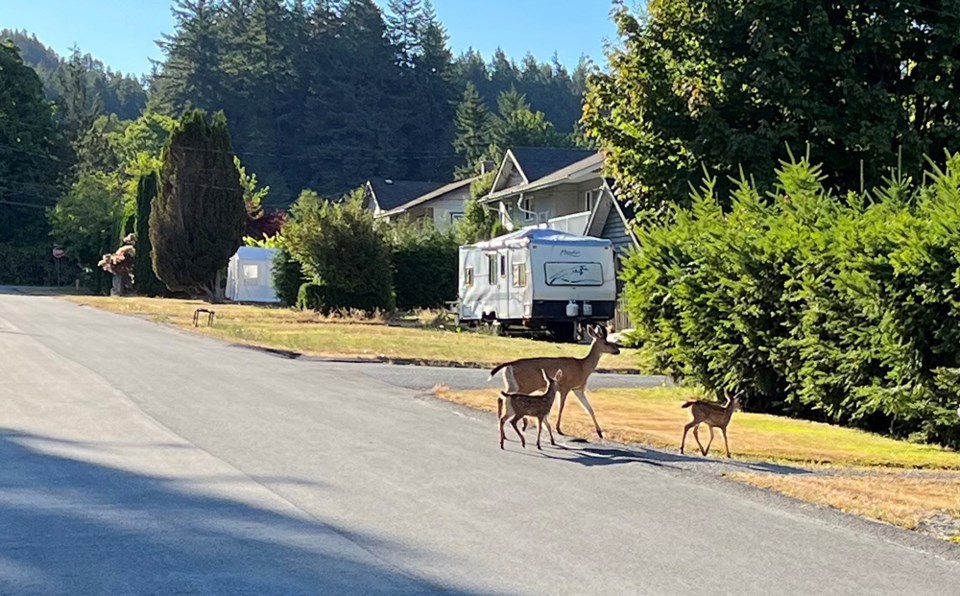With BC in a peak period for wildlife activity, Road Safety at Work is urging drivers on the Sunshine Coast to be on alert for animals on highways.
“Wildlife collisions often happen with little or no warning and are traumatic for everyone involved,” stated Trace Acres, program director for Road Safety at Work, in a media release. “Drivers, their passengers and animals can be injured or killed by the initial impact.”
Every year in BC some 9,900 vehicle collisions with wildlife are reported, according to ICBC. The actual numbers may be much higher due to under-reporting. Collisions with deer often increase at this time of year, and with moose in June and July.
The force of a collision with a large animal can cause serious injuries when drivers lose control of their vehicle and go off the road or hit another vehicle. The risk increases at this time of year due to wildlife seasonal habits that are based on feeding and reproductive cycles, according to the release. Deer and moose can change their normal travel area and cross roads more often.
Wildlife collisions are more common during dawn and dusk — from 6 to 8 am and 5 to 8 pm — when animals are most active and light conditions are low, the release stated. Collisions often occur on highways and roads connecting rural and suburban areas, and near good habitat and forage sites such as green belts, parks, fields, and golf courses.
Steps to help prevent collisions
Animals are unpredictable. When they appear to be leaving the road they may suddenly turn around and run in front of you.
“You can't control what wildlife does, but you can take steps to reduce your risk of a collision,” stated Acres.
Drivers are advised to:
• Remain alert during peak wildlife hours
• Watch for animal crossing signs
• Slow down when they see an animal on the side of the road; others may be nearby.
• Pay attention to other drivers. Someone flashing their headlights may be signaling that they’ve seen an animal.
• Plan routes to avoid key wildlife areas during high-risk times or choose safer travel times.
"Understanding the patterns of wildlife activity and adjusting driving habits accordingly is crucial for preventing these potentially fatal encounters," stated Acres.
Driving for work
For the hundreds of thousands of British Columbians who drive as part of their job, wildlife are just one of the many hazards they face on the road. Driving may be the most dangerous thing they do at work. Vehicle crashes are the leading cause of traumatic work-related deaths in BC. Yet most crashes can be prevented.
When employees drive on the job full time, part time or occasionally, their employers are legally responsible for training them in safe driving procedures.
For more tips on driving safely for work or pleasure, and for resources employers can use, go to RoadSafetyAtWork.ca.
Join the Peak's email list for the top headlines right in your inbox Monday to Friday.



